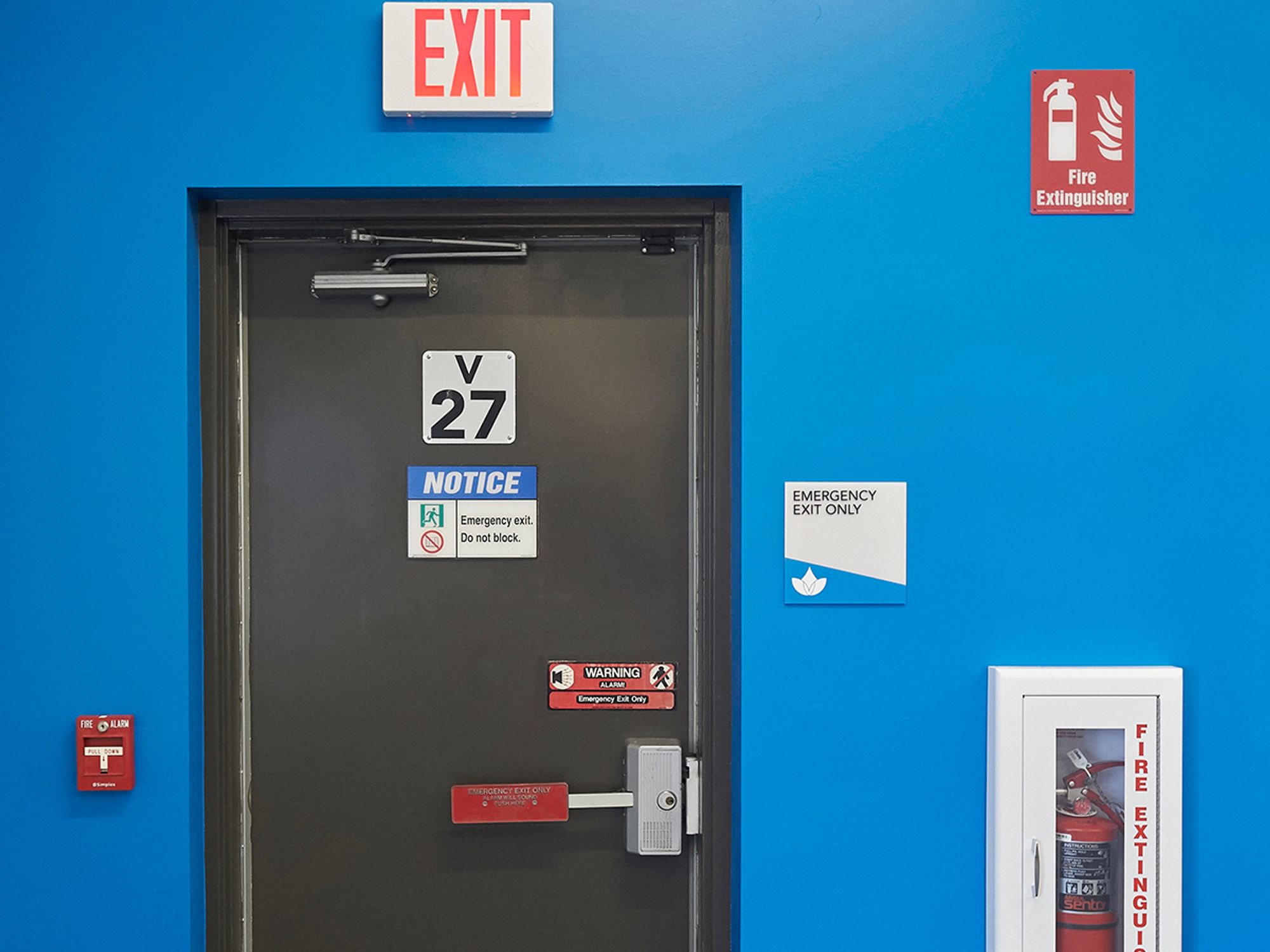InstituteEmergency Planning - OSHASafety & HealthEmergency PreparednessEmergency Planning (OSHA)General Industry SafetyEmergency ExitsExit RoutesEnglishAnalysisFocus AreaCompliance and Exceptions (Level 2)USA
Emergency exits and exit routes
['Emergency Planning - OSHA']

- OSHA requires employers to provide clear, permanent exit routes for employees to leave safely in an emergency.
- Exit routes should always be unlocked, free from obstruction, well-lit and clearly marked.
All buildings designed for human occupancy must have a way for occupants to quickly leave in case of an emergency. The designated paths of exit must be arranged and maintained to provide a free and unobstructed means to exit all parts of the building at all times and should be accessible to occupants with impaired mobility.
The Occupational Safety and Health Administration (OSHA) requires employers to provide clear, permanent exit routes and adequate exits for employees to leave safely in an emergency. OSHA’s requirements for exit routes, emergency action plans, and fire prevention plans are found at 1910.34 through 1910.39.
Employers must:
- Provide exit routes that are permanent.
- Separate exits using fire resistant materials.
- Limit openings into an exit.
- Ensure the number of exit routes is adequate.
- Ensure there are at least two exit routes unless the exception under 1910.36(b)(3) applies.
- Provide adequate exit discharge to a place of safety for employees.
- Make sure exit doors are unlocked from the inside at all times.
- Use only side-hinged exit doors.
- Ensure the capacity of exit routes is adequate to allow prompt evacuation of all employees.
- Provide exit routes that meet minimum height and width requirements.
- Keep exit routes free of explosive or highly flammable furnishings or other decorations.
- Make sure exit routes are free and unobstructed.
- Ensure lighting and marking is adequate and appropriate.
- Maintain exit routes during construction, repairs, or alterations.
- Ensure that an employee alarm system is operable.
